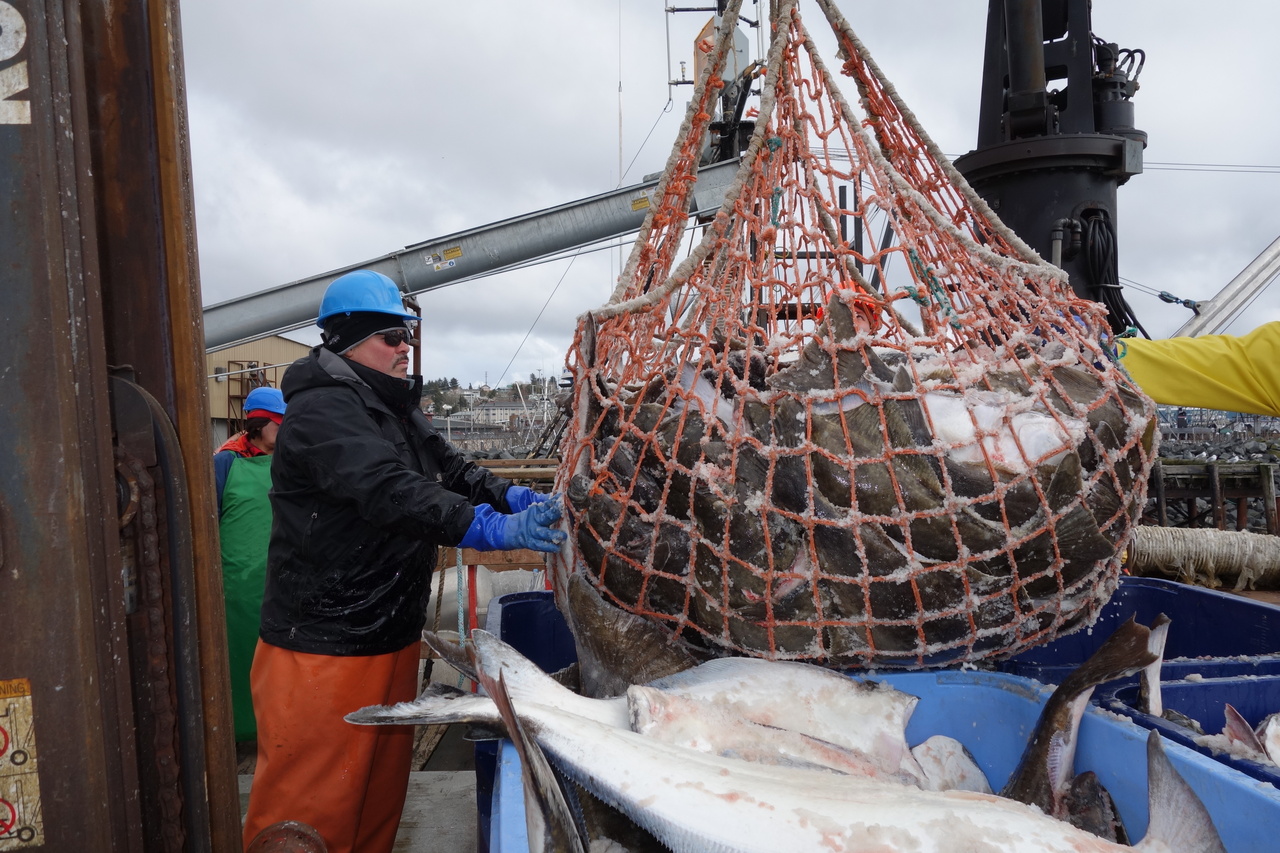Sales of Alaska’s most popular seafoods are being hit hard by markets upended by the coronavirus, but perhaps none is getting battered worse than halibut. Along with the big losses in the lucrative restaurant trade, Pacific halibut also is facing headwinds from increasing foreign imports.
Starting three years ago, sales of fresh Pacific halibut to established markets on the East Coast were toppled by a flood of less expensive fish flowing in primarily from eastern Canada. Trade data show that for 2019 through February 2020, total Canadian halibut imports to the United States topped 15.3 million pounds, for which the U.S. paid nearly $107 million.
“It is taking over the eastern seaboard and also is being trucked from Boston to major middle American markets such as Chicago and Denver. It’s very hard to sell Alaska halibut to these traditional markets now. The Canadian product is cheaper and is available nearly year round,” said a marketer with over 30 years' experience in selling halibut from Southeast Alaska, speaking on condition of anonymity.
“All of a sudden, an important market that paid a good price for fresh halibut has disappeared,” he said. “Rule of thumb is generally, sell fresh make a profit, freeze halibut lose money.”
Earlier this year, fresh farmed Atlantic halibut was spotted for sale at $9.99 a pound at a Costco near Seattle.
Total global production of farmed halibut is only 4.4 million pounds, of which 3.5 million comes from three farms in Norway. (The remainder is from Scotland, Canada and Iceland.) From 2019 through February 2020, the U.S. bought nearly 2 million pounds of wild caught and farmed halibut from Norway for $10.5 million.
Alaska’s losses in fresh sales are combined with huge hits in the west coast frozen market. That’s due to another newcomer: increasing imports of halibut caught by Russians and processed in China. https://www.nationalfisherman.com/alaska/alaskas-halibut-season-gets-rocky-start-under-transportation-constraints-and-global-competition/
“Halibut is not consumed by Asians nor Russians, so they target the U.S. The Russian halibut is mostly fished longline, dressed collar and tail off, and frozen in blocks at sea. They off-load in Busan and auction it to processors for making into fillets,” he said. The fish then goes to the states and Canada for resale at prices that undercut all others.
“I have been calling end users and distributors trying to find placement for our Alaska product in the frozen fillet form. But the Russian product has taken over,” he wrote in an email. “I visited a customer in Vancouver, and he showed me some Russian/Chinese skinless halibut fillets he had bought in the low $6's. Alaskan fillets, for reference, needed to be in the $13s to recoup costs. He mentioned that most of his customers have switched to the less expensive imported. I spent weeks calling fish and chip shops that have always used Alaskan, and they prefer not to cut in house but use the imported twice frozen fillets,” he said, adding that Canada is where most of Alaska’s larger frozen halibut (60+) has gone over the last few decades.”
Other market watchers agree the appearance of Russian halibut is a new twist to conventional market trends.
“We started seeing increased Russian production about a year and a half ago when it started to pop up in the data,” said Garret Evridge, a fisheries economist with the McDowell Group. “We were wondering where that volume was going, but given the difficult nature of trade data, we didn't have a firm grasp. Now we see that some of that harvest is making its way into the U.S. It is a relatively new development.”
The Russian/Chinese fish also makes an end run around trade tariffs of up to 25 percent imposed two years ago by the Trump administration.
“A lot of the product used to come in through Seattle, but since the USA imposed the duties for Chinese-processed halibut coming into this country, a lot comes into Vancouver, thereby avoiding the duty,” said the marketer.
The volume coming in from Russia has been tricky to track once it enters the “black box of China,” said Evridge, who added: “Then our data really falls apart. But we understand that Russian Pacific halibut entering China can make its way to the U.S. through a variety of ways.”
And the Russian imports are increasing.
“In 2019, we saw about 2 million pounds of frozen Russian caught halibut imported into the U.S. The year prior it was 140,000 pounds. Through the first two months of 2020, we've imported about 420,000 pounds, so it’s trending higher. For a relatively low volume fishery and for U.S. markets, 2 million pounds is pretty substantial,” Evridge said.
Trade data show that the U.S. paid nearly $6.7 million for 2 million pounds of Russian halibut from 2019 through January 2020.
The foreign fish also get the benefit of more favorable exchange rates.
“The Russian ruble has weakened against the U.S. dollar by about 14 percent. If I'm a U.S. buyer, there's a 14 percent discount. The ruble is also weak against the Chinese Yuan, so if I'm a Chinese buyer, bringing that product in is relatively affordable. That's another thing that that we struggle with,” he explained.
Tariffs of up to 25 percent are in place for most seafood both coming and going to China, and Russia has not purchased a pound of U.S. seafood since 2014.
Meanwhile, Alaskans have 17 million pounds of halibut to catch this year, and landings so far are down 60 percent. With deflated markets and dock prices in the $3-4 range, there’s not much motivation to go fishing.







